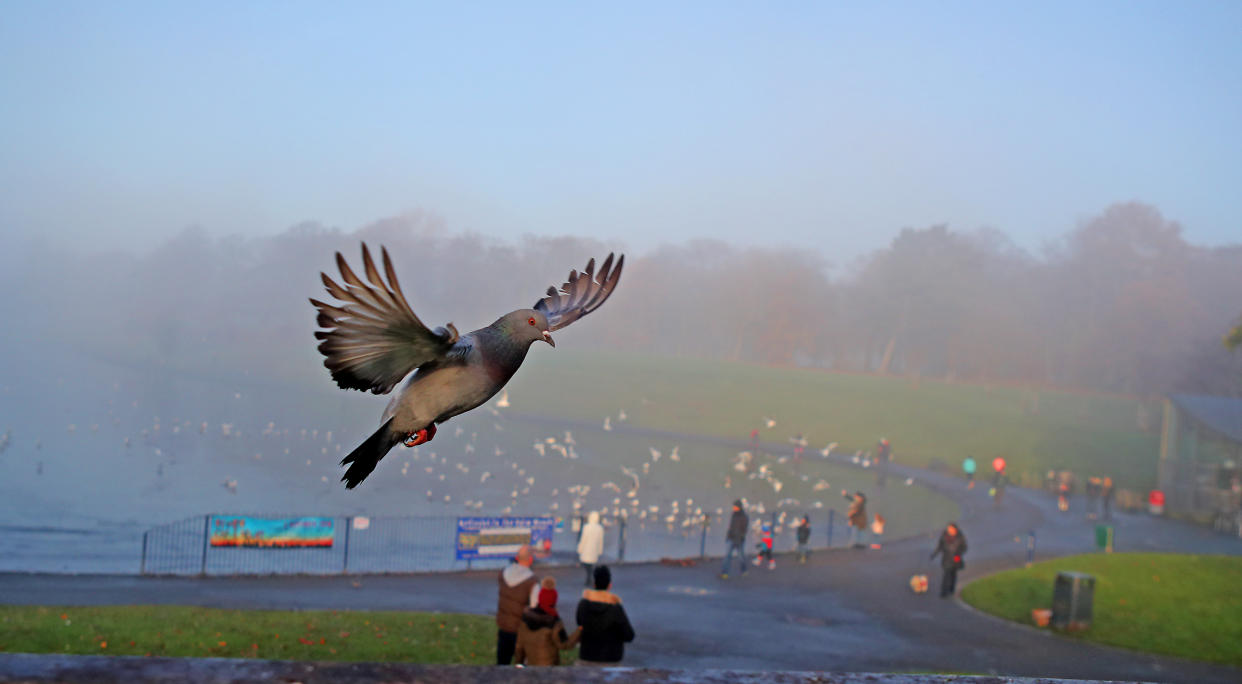Files reveal CIA used dolphins, pigeons and ravens for spying missions

Files revealing details of secret pigeon spying missiles have been declassified.
The CIA files reveal details of a string of schemes using animals to help with covert intelligence gathering including pigeons, dolphins and even an attempt to use a cockatiel.
The files reveal how pigeons were trained for clandestine missions photographing sensitive sites inside the Soviet Union.
The release also reveals how ravens were used to drop bugging devices on window sills and dolphins were trained for underwater missions.
The CIA believed animals could fulfil "unique" tasks for the agency's clandestine operations.

According to the BBC the 1970s' operation was codenamed Tacana and explored the use of pigeons with tiny cameras to automatically take photos, newly released files show.
It took advantage of the fact that the humble pigeon is possessed of an amazing ability - almost a superpower. They can be dropped somewhere they have never been before and still find their way hundreds of miles back home.
Operation Tacana would grow out of work done in the 1960s that looked at uses for different animals. The files reveal that the CIA trained a raven to deliver and retrieve small objects of up to 40g from the window sill of inaccessible buildings.
A flashing red laser beam was used to mark the target and a special lamp would draw the bird back. On one occasion in Europe, the CIA secretly delivered an eavesdropping device by bird to a window (although no audio was picked up from the intended target).

The CIA also looked at whether migratory birds could be used to place sensors to detect whether the Soviet Union had tested chemical weapons. It also appears there were trials of some kind of electric brain stimulation to guide dogs remotely, although many of the details are still classified.
In Key West Florida, a team tried to use bottlenose dolphins for underwater attacks against enemy shipping. There were also tests on whether dolphins could carry sensors to collect the sounds of Soviet nuclear submarines or look for radioactive or biological weapons traces from nearby facilities.
They also looked at whether dolphins could retrieve or place packages on ships on the move.
By 1967, the CIA was spending more than $600,000 (£480,000) on three programmes - Oxygas for dolphins, Axiolite involving birds and Kechel with dogs and cats.
One file reveals that Canadian falcons were being trained aboard a boat before mentioning they had tried using a cockatoo. "We are completely in the dark as to what the possibilities are in regard to this critter," the author writes.
Pigeons proved the most effective and by the mid 1970s the CIA began flying a series of test missions. One was over a prison, another over the Navy Yards in Washington DC.
The camera cost $2,000 and weighed only 35g, the harness less than 5g. Tests showed that about half of the 140 pictures on a roll of film would be of good quality. The pictures show remarkably clear details of people walking and cars parked at the Navy Yard.
Read more from Yahoo News UK:
David Cameron opens up on death of his son
Brits are only ‘part-time Europeans’ - Juncker
Teen who idolised mass shooters jailed
Experts found that the quality of the photographs was higher than those produced by spy satellites operating at the time.
One fear raised during the tests was if a member of the public stumbled upon "pigeon and camera" and assumed that the government was spying on its own, so an elaborate cover story was cooked up.
The intended mission was for pigeons to be used against "priority" intelligence targets within the Soviet Union.
However, the details of how many missions were successfully flown remain classified - for now.
Watch the latest videos from Yahoo UK

 Yahoo News
Yahoo News 
